Ankle Mobility Exercises
- Outside Ankle Pain: Running, Standing, Walking - February 14, 2024
- Plantar Fasciitis Taping - January 30, 2024
- Peroneal Tendonitis Taping - January 30, 2024
Mobility of the ankle joint plays a vital role in most of our daily activities, such as walking, using the stairs, transitioning from sitting to standing and crouching down. Several factors can contribute to a reduction in the range of movement of the ankle joint; in most cases, ankle mobility exercises can rectify these issues.
The most common reason for reduced mobility in the ankle joint is the result of a tight calf muscle. The calf muscle is a large muscle that sits on the back of the shin and helps to plantarflex the foot. If it is tight, it restricts the ankle’s ability to dorsiflex.
Other causes of reduced ankle mobility include scar tissue formation at the front of the ankle from a sprained ankle, leading to anterior ankle impingement. An impingement can cause a pinch at the front of the ankle when moving the knee over the toes.
5 Best Ankle Mobility Exercises
A common complaint is that restricted ankle mobility prevents people from doing a squat. While ankle mobility exercises can help, another solution is to place a heel raise under your heel or wear a high-drop trainer when doing a squat, which resolves the issue in the short term for most instances.
1: Foam Rolling Calf Muscle
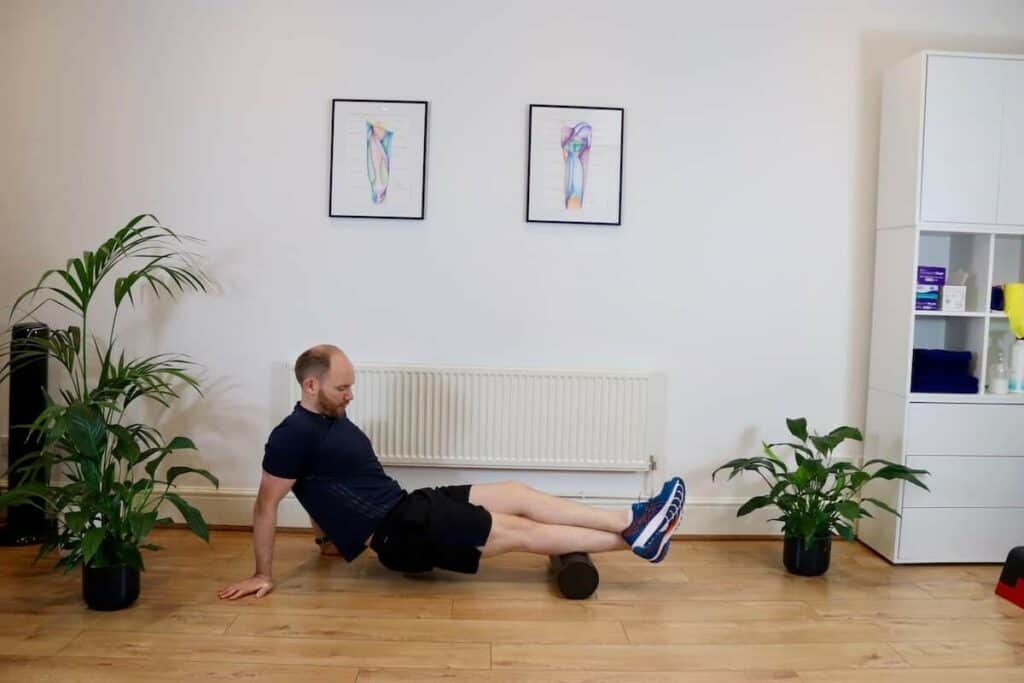
Foam rolling the calf muscle can increase blood flow to the area, improving the flexibility of the tissue.
- Sit on the floor and place the calf of the affected leg on the foam roller
- Place the opposite leg on top and apply downward pressure.
- Lift your hips off the floor and roll up and down along the calf muscle
- Duration: 60 seconds
- Sets: 3
2: Gastrocnemius Stretch
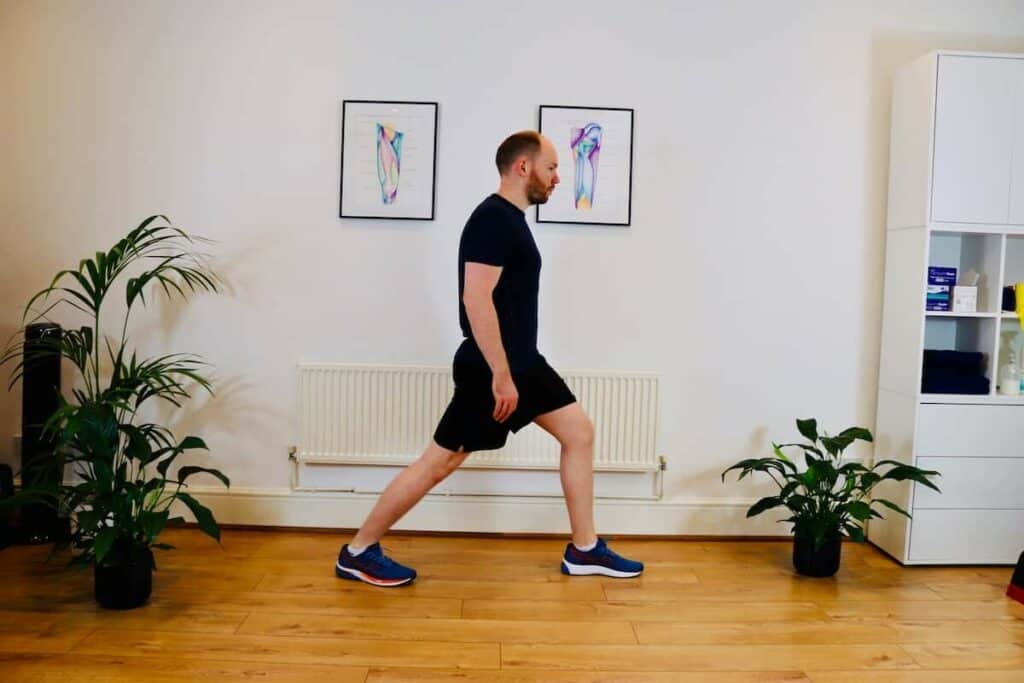
The Gastrocnemius muscle is part of the calf muscle group, playing a vital role in the push-off phase of the gait cycle. If the Gastrocnemius muscle becomes too tight, it can restrict your stride length.
- Standing upright, place one leg straight behind you and your other in front.
- Keep the heel of your hindfoot on the floor and lean against the wall.
- Once you feel a pull on the back of your left, stay in this position
- Hold for 45 seconds
- Repeat 3-4 times daily
3: Soleus Muscle Stretch
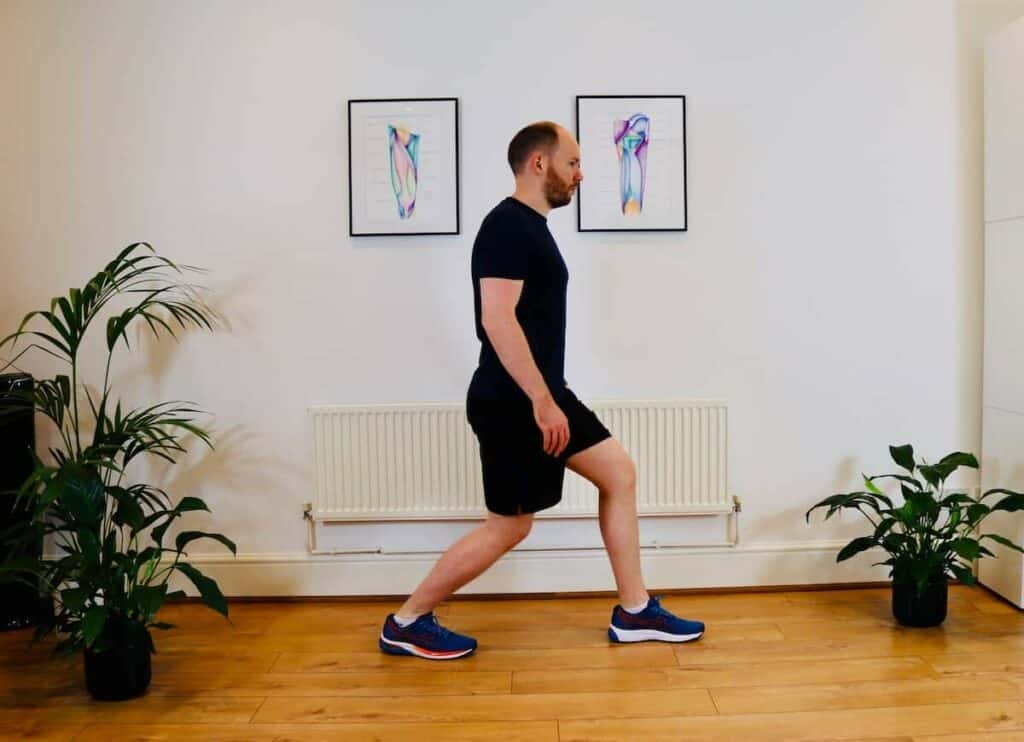
The Soleus muscle is part of the calf muscle group, making up 2/3 of the calf muscle. It plays a vital role in the stability of the foot and ankle. When tight, the Soleus muscle can severely limit the ability to squat or crouch.
- Standing upright, place one leg straight behind you and your other in front.
- Keep the heel of your hindfoot on the floor, bend your back knee and lean against the wall.
- Once you feel a pull on the back of your lower leg, stay in this position
- Hold for 45 seconds
- Repeat 3-4 times daily
4: Anterior Tibialis Muscle Stretch
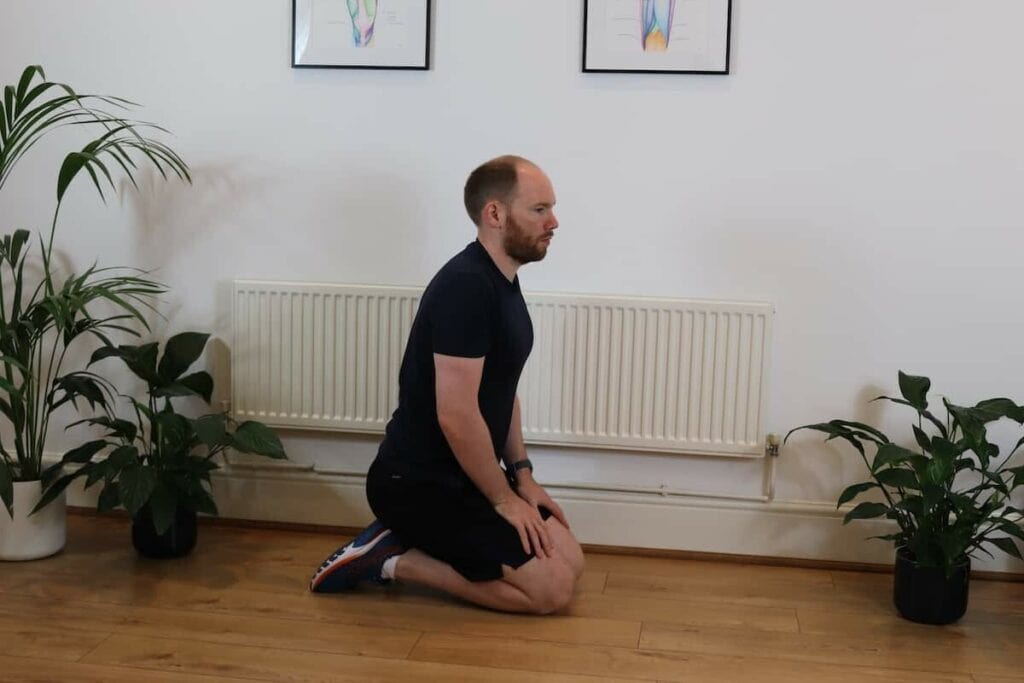
The Anterior Tibialis Muscles sit on the front of the shin, attaching to the top of the foot. The Anterior Tibialis helps to lift the foot when walking, and tightness in this muscle can restrict ankle mobility, especially when moving into plantarflexion. People notice this most when trying to sit back on their heels.
- In a kneeling position, point your toes so the top of your foot touches the floor.
- Sit back on your heels until you feel a stretch on the front of your foot and shin.
- Hold: 45 seconds
- Sets: 3
5: Plantar Fascia Stretch
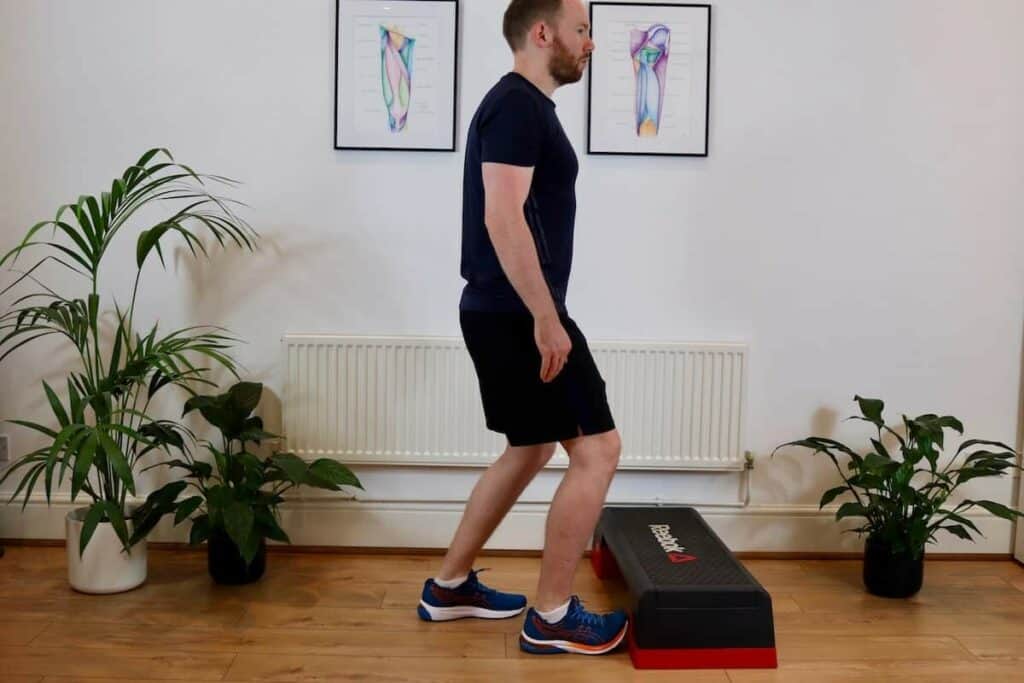
The Plantar Fascia sits on the underside of the foot, connecting the heel to the forefoot. It plays a vital role in the windlass mechanism that facilitates a regular walking and running gait.
- Stand upright and face a wall or a step.
- Place your toes against the step.
- Bring your knee as close to the step as possible
- Hold for 45 seconds
- Repeat 3-4 times daily
_______________________________________________________________________
We are specialists in treating foot conditions, and you can see one of our Foot and Ankle Specialists in our clinic in Fulham, South West London.
Related Articles
Ankle Taping – Massage for Ankle Pain – Best Massage Guns
Feel Good, Move Well, Be Better
